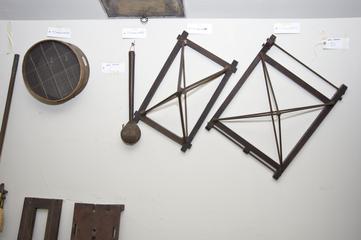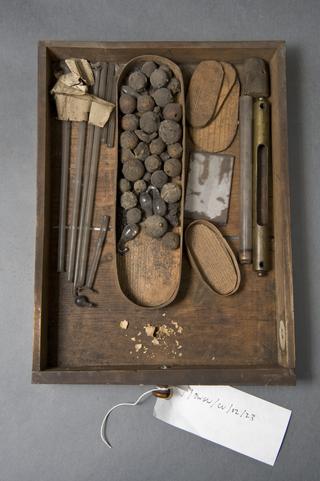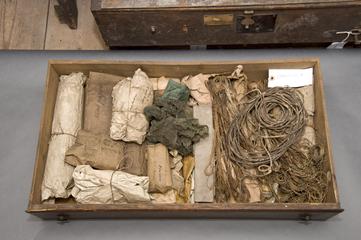

Drawing, views of “socket” to fit tubular arm
- Made:
- 1806-1812
Drawing. Views of “socket” to fit tubular arm, apparently for mounting drilling instruments &c., associated with James Watt's sculpture copying machines, 1806-12.
This item is part of the contents of the workshop that Scottish engineer James Watt developed at his home, Heathfield, at Handsworth, Birmingham. Although Watt is best known for his work on the steam engine, his workshop contains a wide variety of objects from many different projects, from chemistry to sculpture-copying.
This drawing is one of a set made by Watt during his time in the workshop. They include detail from how to mount a diamond on the end of a wire, to designs for weighing machines, to the construction of the lathe bench present in the workshop. However, the majority concern Watt’s work on his sculpture copying machines, both resident in the workshop. They show how their design evolved over time, including details of framing, feed mechanisms, drill frames and more. These were Watt’s major project in the workshop, and provide us with dates for some of the component parts of the machines stored around the room.



